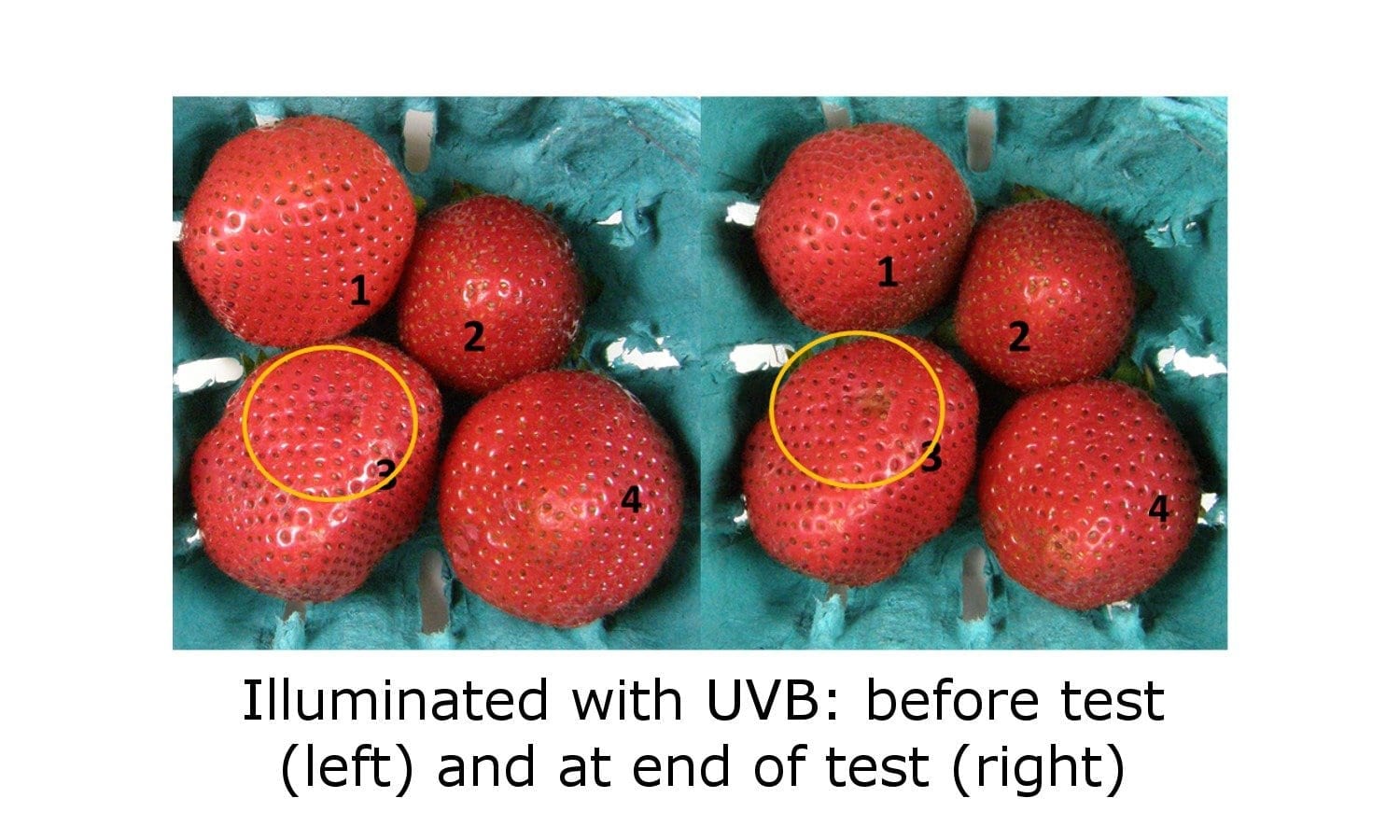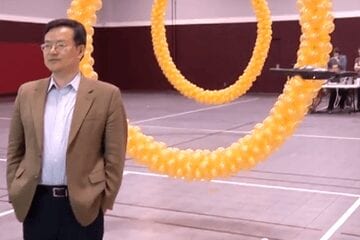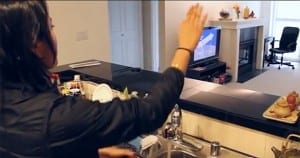
New Approach to Slowing Rot Doubles Berry Shelf Life
Strawberry lovers rejoice: the days of unpacking your luscious berries from the refrigerator only to find them sprouting wispy goatees of mold may be numbered. A research team from the U.S. Department of Agriculture’s (USDA) Food Components and Health Laboratory in Beltsville, Md., and Sensor Electronic Technology, Inc. (SETi) in Columbia, S.C., has demonstrated that low irradiance ultra-violet (UV) light directed at strawberries over long exposure periods at low temperature and very high humidity—typical home refrigerator conditions—delays spoilage. The team used a novel device incorporating light-emitting diodes (LEDs) that emit UV at wavelengths found in sunlight transmitted through Earth’s atmosphere. The results, which will be presented next week at the Conference on Lasers and Electro-Optics (CLEO: 2013), are significant because previous attempts using traditional UV light sources for storage of produce resulted in severe drying, and it was unknown if the advantages of long exposure to low-level UV light would be effective against rot.
LEDs are now commonplace thanks to their long life and energy efficiency, as well as their ability to span the wavelength range from near UV to infrared. The full UV spectrum, however, had presented challenges for LED manufacturers – until recently. SETi developed a special technology to fabricate UV LEDs across the entire UV spectrum from UVA to UVC. This flexibility allowed them to tune the emitted light to the wavelengths most effective for this application.
“UV-LEDs presented the opportunity to try low power devices that work well in the cold and can be engineered to work in small spaces such as refrigerator compartments,” says lead USDA researcher Steven Britz, who will present the work at CLEO: 2013.
Using strawberries purchased from a local supermarket, Britz’s team placed one batch in a dark refrigerator and one batch in a refrigerator exposed to UV-LEDs. Results showed the UV-treated berries had their shelf life extended twofold—nine days mold-free—over darkened berries, as judged by weight, moisture content, concentration of select phytochemicals, visible damage, and mold growth.
Based on these encouraging results, the team is working to commercialize the technology for home refrigerators.
The Latest Bing News on:
9-Day Fresh Strawberry
- Mother's Day: Events, deals to treat your mom in Houstonon May 8, 2024 at 2:14 pm
Celebrate your mom on Sunday for Mother's Day to a yummy brunch, a delicious dinner, or take her to have some fun at a Jazz Festival in downtown Houston! Here's a list of deals and events going on ...
- The 14 Best Mother's Day Restaurant Dealson May 6, 2024 at 1:05 pm
Bonefish Grill will open one hour early at 10 a.m. on Mother's Day for brunch. The restaurant chain will also feature menu specials on May 12, including Bang Bang Shrimp Eggs Benedict, Crème Brûlée ...
- East Tennessee Strawberry Festival Returns To Daytonon May 6, 2024 at 12:49 pm
American Pride Produce Market in Dayton has plenty of fresh Tennessee Strawberries at their 3333 Rhea County Highway across from Walmart. They are brought in daily, and you can call the store at ...
- Happy Mother's Day! Here are 19 places to get brunch or dinner with mom in Louisvilleon May 6, 2024 at 2:01 am
From brunch to dinner, here are 18 restaurants in the Louisville area that are offering special meals to help make Mother's Day great.
- Evansville-area food news: 9 bites of food news for you this weekon May 6, 2024 at 1:47 am
Here are 9 bites of food news this week around Evansville, from the return of a favorite food truck to the first local strawberries.
- 2024 Alabama Strawberry Festival returns May 3-4on May 1, 2024 at 9:00 am
Not one, but two fun-filled days return this weekend with the Alabama Strawberry Festival. Set for Friday, May 3-Saturday, May 4, at Depot Park, the festival promises plenty of delicious, ...
- Triple Strawberry Cheesecakeon April 30, 2024 at 8:36 am
Then, when the cheesecake is cooled, you’ll top it with fresh strawberries and ... Do ahead: Cheesecake (without strawberry topping) can be made 2 days ahead. After cooling, cover with plastic ...
- 2024 Alabama Strawberry Festival expands to two dayson April 25, 2024 at 8:59 pm
Not one, but two fun-filled days are planned in May when the North Alabama town of Cullman gears up for its annual festival centered around strawberries. Set for May 3-4, 2024, in Depot Park, the ...
- Mother’s Day will be here before you know it: These South Florida restaurants are taking reservations nowon April 25, 2024 at 10:05 am
Mother’s Day is Sunday, May 12, sooooo … do not mess this up. If you want to take mom out for a meal, then you better make a reservation now. We hope this list of mama restaurant ...
- Strawberry picking season is starting. Here’s where you can go to grab fresh fruit.on April 4, 2024 at 10:30 pm
With the coming of spring brings fresh fruits and ... Carrigan Farms offers strawberry picking across 5 acres with no reservations needed. The farm is open on select days for strawberry picking ...
The Latest Google Headlines on:
9-Day Fresh Strawberry
[google_news title=”” keyword=”9-Day Fresh Strawberry” num_posts=”10″ blurb_length=”0″ show_thumb=”left”]
The Latest Bing News on:
Shelf life of fruit
- Concerns Over Health Hazards Of Artificially Ripened Fruitson May 8, 2024 at 7:10 am
This practice is common among fruits sellers in Nigeria. Fruits are an essential component of food. They are assumed to protect the body from diseases and increase immunity. Ripening is a natural ...
- Shelf-life extending tech company secures funding booston May 7, 2024 at 5:00 pm
A company that produces an antimicrobial coating for packaging to extend the shelf life of fruit & vegetables has secured a £750,000 funding boost from investors. OSY Group will use the cash injection ...
- Healthy Snacking Trends Propel Freeze Dried Fruits Market Towards USD 17.82 Billion by 2033on May 6, 2024 at 1:46 am
Freeze Dried Fruits Market According to Future Market Insights, the global freeze dried fruits market is is witnessing substantial growth, projected to record a CAGR of 7.5% from 2023 to 2033, ...
- Do not store these fruits in the fridge even by mistakeon May 4, 2024 at 1:12 am
When it comes to preserving fruits, many of us instinctively reach for the fridge as the go-to storage solution. However, not all fruits thr..|News Track ...
- How To Store Bananas For Extended Shelf Lifeon May 3, 2024 at 3:48 pm
Bananas have a knack for ripening at lightning speed, often leaving bananas that turn too soft or too soon. Learning how to ...
- The $25 Find You’ll Use on Every Shelf in the Fridge (Over 5,000 Amazon Shoppers Bought It Last Month!)on May 2, 2024 at 1:16 pm
It’s definitely worth spending $25 to straighten up your fridge and make your produce last longer. There’s no telling how long the set will be nearly 40% off, so don’t wait too long to click the buy ...
- Canned Vs Frozen Fruit: How Do These Compare When Making Peach Crisp?on April 29, 2024 at 8:44 am
When fresh fruit isn't available for your favorite desserts, canned or frozen peaches are great alternatives. However, how do they compare in a classic crisp?
- Follow my 8 tips to make your groceries last longer – you can even extend the life of your milk with a pinch and a shakeon April 26, 2024 at 1:56 pm
Produce savers can lengthen the shelf life of strawberries, other fruits, and cheese. Try using paper towels to absorb the moisture from berries and salads, she added. By implementing these tips and ...
- Mark Bailey: Preserving the harveston April 21, 2024 at 3:03 am
Fruits and vegetables can be preserved in a wide variety of ways that can be used for short-term or long-term food preservation. Some garden produce can be preserved or have the shelf life ...
- Freeze-Dried Fruit Vs Dehydrated Fruit: What's The Difference?on December 14, 2023 at 6:19 pm
It extends the shelf life of fruit -- one of nature's most nutritious offerings -- by draining the majority of its moisture and preventing the accumulation of mold. The downsides are that dried ...
The Latest Google Headlines on:
Shelf life of fruit
[google_news title=”” keyword=”shelf life of fruit” num_posts=”10″ blurb_length=”0″ show_thumb=”left”]









